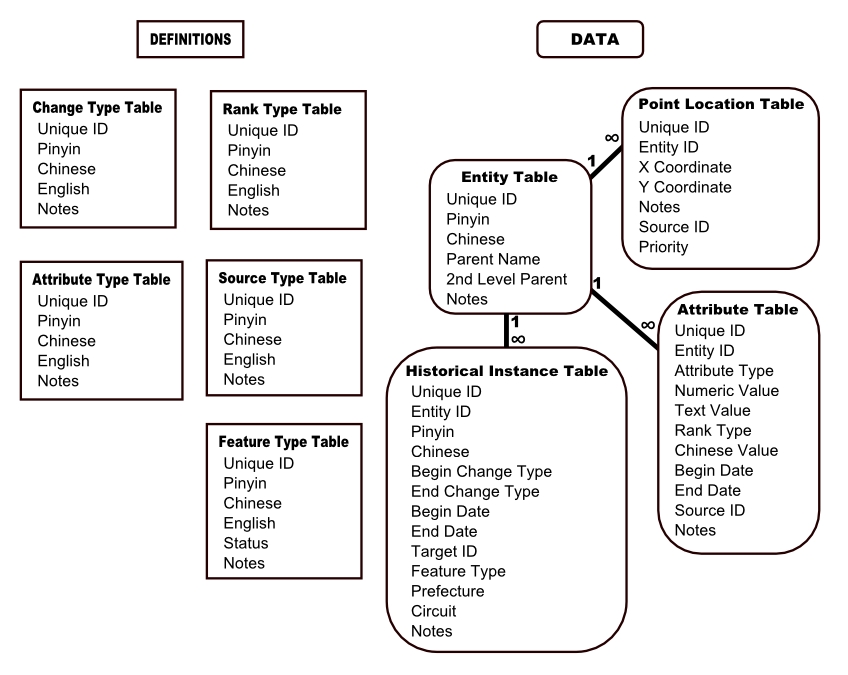Probably the greatest criticism of the use of digital methods for the exploration of humanities questions is that the medium distorts the traditionally qualitative nature of humanities scholarship. This is not so much out of necessity, as there is nothing within the a computer itself that forces scholarship to be quantitative or disoriented from the expert scholar toward a supposedly cold set of data. However, without attempting to model the nuanced views of humanities scholars in regard to their subject matter, then this criticism becomes a truism. As a result, complex models of actors, agency, place, event and any other significant, intuitive structure need to be put in place at the beginning of any digital humanities scholarship. The diagram below describes the model for representing place in The Digital Gazetteer of the Song Dynasty. While the concept of place–especially from the perspective of administrative regions during a stable period of governance–may seem straight forward, it is clear on examination that the static notion of place used to represent locations in everyday applications such as Google Maps does not suffice to represent historic locations. Without an elegant data model, the representation of entities that change shape, name, and other characteristics (and even existence) over time becomes an exercise in futility. And without an elegant representation of the research done by scholars, there is little chance for an elegant analysis or theory emerging from it.

